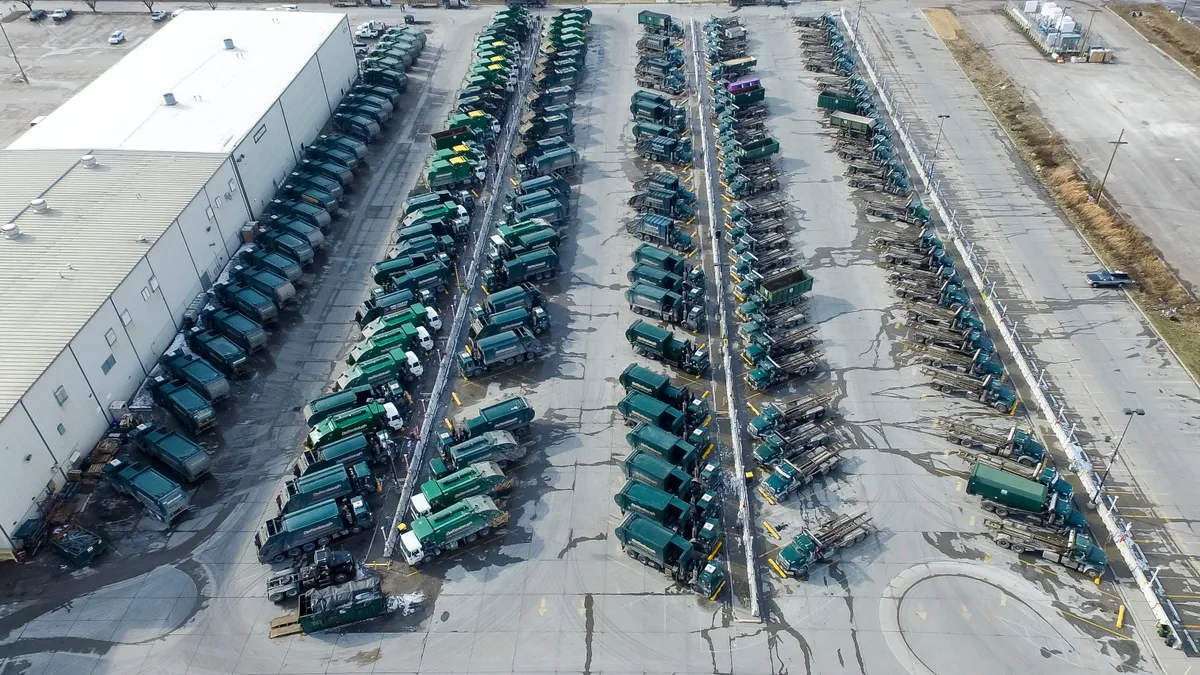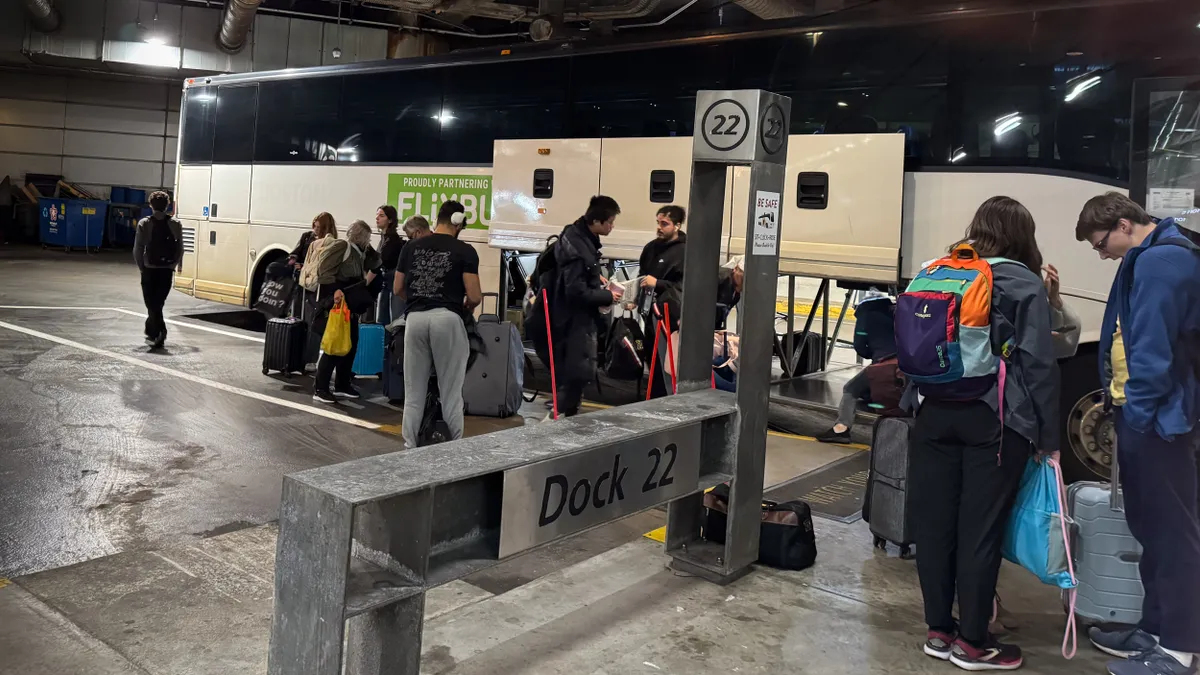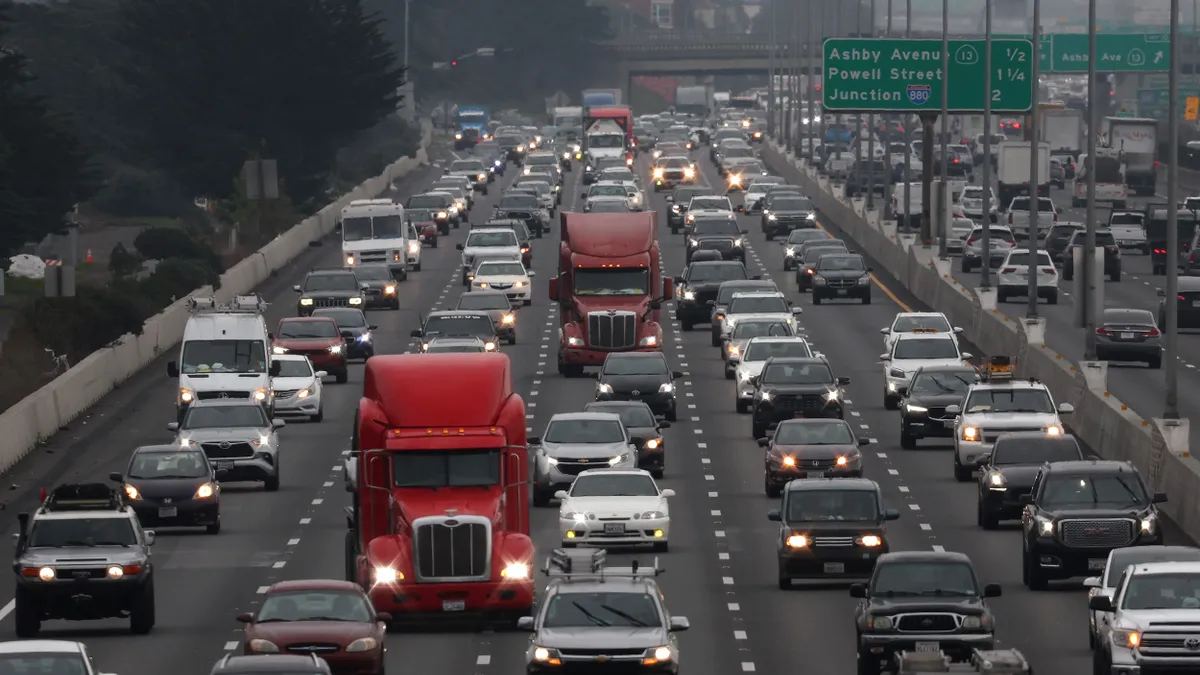The growth of autonomous vehicles (AVs) is expected to affect many industries and many areas of transportation, including for companies that manage vehicle fleets. Whether those fleets are used for car rentals, ride-hailing, deliveries or city services, autonomy is expected to be a game-changer and require nontraditional styles of fleet management and optimization.
That's where companies like the Israel-based Fleetonomy come in, with a machine-learning platform that improves existing operations and can help create new revenue streams. Companies can also use the platform to help utilize their fleets for multiple services.
Smart Cities Dive caught up with Fleetonomy’s co-founder and CEO Israel Duanis at the recent LA CoMotion Leadership Conference in Los Angeles to learn more.
This interview has been edited for clarity and brevity.
SMART CITIES DIVE: What challenges do fleet operators face?
ISRAEL DUANIS: Today, to see services that are becoming more on-demand, more real-time and more personalized, customers are expecting to get the service, delivery or transportation that fits their needs. In order to provide that service, fleet operators need to have a better understanding of their customers, better understanding of what exactly an on-demand service is, and better capabilities of leveraging data sources that have an effect on your business.
If you're a car rental company, you need to know about traffic or weather, hotel occupancy, flights. If you're giving car subscriptions or ride-sharing, you need to know about weather, events in the city. These things are not really available to these fleet operators. So, we crunch all of that and give the fleet operators new tools to use the data that is out there and to make sure they are not missing the train. Services are changing. Transportation is not only renting a car or taking a taxi.
How do you go about crunching all the numbers to optimize fleets?
DUANIS: At the end of the day, we have machine learning-based engines that we train to take a lot of data sources. We take data from the fleet itself and we also take data from external data sources and we try to see how that affects demand in real life. We can go and look at the history of your service and check correlation of how different data sources affect your business, and once we've trained the machine, when we go live we're able to take all data sources into account and give you a prediction, to tell you in real time what you need to do to reduce your idle time, if you're sending the right vehicles to the right place.
It's mostly about the engines we develop and the fact that we're able to collect a lot of different data sources to create something that is quite robust and can give you a prediction of almost anything you're going to operate. We also know how to change the engines according to different geographies. Customers in Germany or the U.K. or the U.S. are reacting differently to different features or correlations to different changes in the data. We've also managed to do that.
With fleets moving closer to using AVs, what does that mean for the future?
DUANIS: We think that when you look at the autonomous era, fleets will need to be data-driven, they will need to be automated in their decision-making, everything. There's a lot of focus on the vehicle: how will it drive? But not enough people are talking about the fact that you will need to have an automated fleet but organization that is operating this fleet. How do you allocate the vehicles? How do you maintain them? How do you synchronize the demand and maintenance?
I think that we're taking steps today by providing a platform that is real-time, data-driven and also very personalized according to your needs, which are the building blocks and we think are relevant to autonomous fleets. At the end of the day, you want an autonomous fleet to be orchestrated by one centralized platform that will allocate the vehicles, take a lot of data sources, react to them and be proactive about some of the insights. That's where we're focusing today. Customers can say today, "You know what, we want to have some sort of a manual control." And we're OK with that. But we are helping our customers, step by step, take out manual areas that are not needed sometimes, and by that we reduce costs of manpower that are needed in operations.
Because we see operators today, we're starting to understand that although we have different kinds of services — mobility, delivery — we have one fleet. The companies that will be able to take that one fleet and leverage it by operating multiple services as one fleet will be much more efficient, their customers will be happier, because they will be able to go to one place and take care of most of their needs. That is something we're taking care of, because our platform is multi-service and is giving fleet operators the ability to operate multiple services.




















